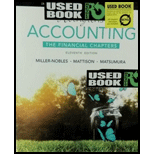
Concept Introduction
Investment Center: It is a subunit of an organisation that holds responsibility towards its profitability in relation to its investment base (or assets base).
Profit Margin Ratio: Profit Margin Ratio is a financial profitability ratio that is used to compare a company’s net earnings and its net sales. It is calculated by dividing net income (or operating income) by net sales of a company.
Asset Turnover Ratio: Asset Turnover Ratio is a financial efficiency ratio which is used to measure how efficiently a company is using its assets to generate sales. It is measured as the ratio of net sales to the average total assets of a company.
1.
To Compute: Each given division’s ROI (Return on Investment).
2.
To Compute: Each given division’s profit margin ratio. Also, results are to be interpreted.
3.
To Compute: Each given division’s asset turnover ratio. Also, results are to be interpreted.
4.
To Confirm: The results from Requirement 1 by using the expanded ROI formula. Also, its conclusion has to be given.
Trending nowThis is a popular solution!

Chapter 24 Solutions
Horngren's Accounting, The Financial Chapters (11th Edition) - Standalone Book
- Bruno Manufacturing uses direct labor-hours in its predetermined overhead rate. At the beginning of the year, the total estimated manufacturing overhead was $680,000. At the end of the year, actual direct labor-hours for the year were 42,500 hours, manufacturing overhead for the year was underapplied by $25,500, and the actual manufacturing overhead was $695,000. The predetermined overhead rate for the year must have been closest to: A) $16.00 B) $15.75 C) $16.35 D) $16.94arrow_forwardWhat was manufactured overhead?arrow_forwardWhich of the following choices is the correct status of manufacturing overhead at year-end?arrow_forward
- Morris Corporation applies manufacturing overhead at the rate of $40 per machine hour. Budgeted machine hours for the current period were anticipated to be 200,000; however, higher than expected production resulted in actual machine hours worked of 225,000. Budgeted and actual manufacturing overhead figures for the year were $8,000,000 and $8,750,000, respectively. On the basis of this information, the company's year-end overhead was: A. overapplied by $250,000 B. underapplied by $250,000 C. overapplied by $750,000 D. underapplied by $750,000arrow_forwardAt the beginning of the year, manufacturing overhead for the year was estimated to be $560,000. At the end of the year, actual labor hours for the year were 35,000 hours, the actual manufacturing overhead for the year was $590,000, and the manufacturing overhead for the year was underapplied by $30,000. If the predetermined overhead rate is based on direct labor hours, then the estimated labor hours at the beginning of the year used in the predetermined overhead rate must have been ___ hours.arrow_forwardGive me Answerarrow_forward

 AccountingAccountingISBN:9781337272094Author:WARREN, Carl S., Reeve, James M., Duchac, Jonathan E.Publisher:Cengage Learning,
AccountingAccountingISBN:9781337272094Author:WARREN, Carl S., Reeve, James M., Duchac, Jonathan E.Publisher:Cengage Learning, Accounting Information SystemsAccountingISBN:9781337619202Author:Hall, James A.Publisher:Cengage Learning,
Accounting Information SystemsAccountingISBN:9781337619202Author:Hall, James A.Publisher:Cengage Learning, Horngren's Cost Accounting: A Managerial Emphasis...AccountingISBN:9780134475585Author:Srikant M. Datar, Madhav V. RajanPublisher:PEARSON
Horngren's Cost Accounting: A Managerial Emphasis...AccountingISBN:9780134475585Author:Srikant M. Datar, Madhav V. RajanPublisher:PEARSON Intermediate AccountingAccountingISBN:9781259722660Author:J. David Spiceland, Mark W. Nelson, Wayne M ThomasPublisher:McGraw-Hill Education
Intermediate AccountingAccountingISBN:9781259722660Author:J. David Spiceland, Mark W. Nelson, Wayne M ThomasPublisher:McGraw-Hill Education Financial and Managerial AccountingAccountingISBN:9781259726705Author:John J Wild, Ken W. Shaw, Barbara Chiappetta Fundamental Accounting PrinciplesPublisher:McGraw-Hill Education
Financial and Managerial AccountingAccountingISBN:9781259726705Author:John J Wild, Ken W. Shaw, Barbara Chiappetta Fundamental Accounting PrinciplesPublisher:McGraw-Hill Education





